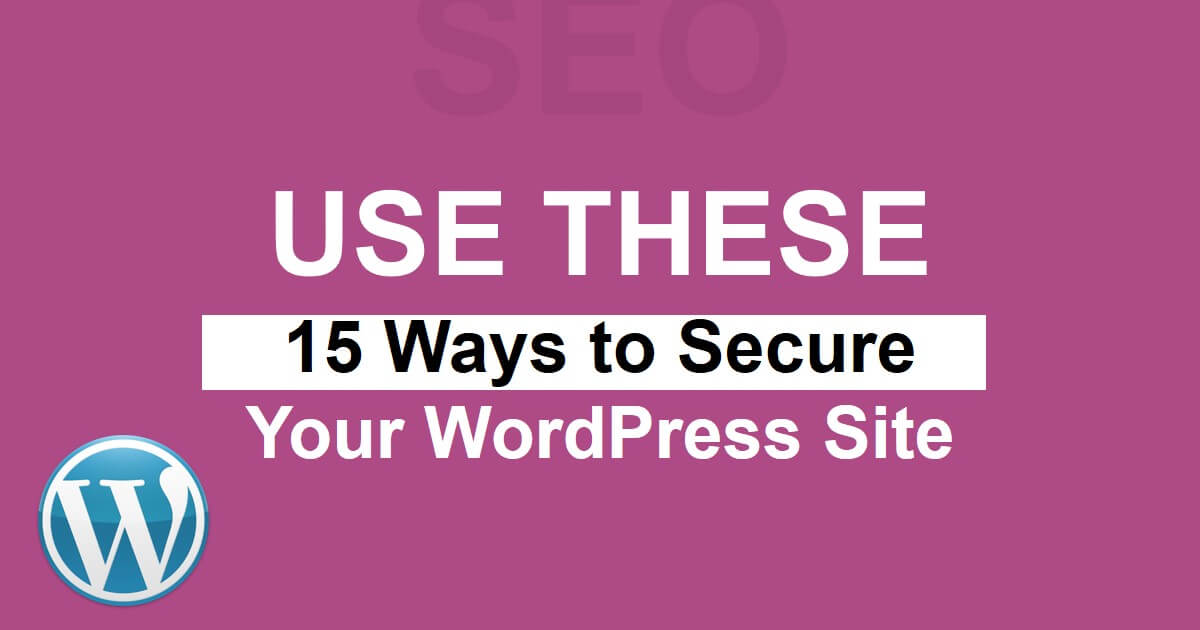
Is your WordPress website safe from online threats? It better be.
Nowadays, WordPress security is more important than ever before.
In this blog, we’ll discuss why security is crucial for your WordPress site and what steps you can take to protect it.
Why WordPress Security Matters?
Hackers and other malicious individuals are constantly trying to breach websites and steal sensitive information. This has led to a significant increase in cyber security attacks.
For example, in 2023, Wordfence, a popular security plugin, blocked over 100 billion password spray attacks. Additionally, an estimated 30,000 new websites are hacked every day.
These attacks aren’t just targeting large companies. Small and medium businesses are also at risk, with 43% of online attacks aimed at them. Unfortunately, only 14% of these businesses are adequately prepared to defend themselves.
Thankfully, there are steps you can take to protect your WordPress website.
Easy WordPress Security Basics
When it comes to securing your WordPress site, there are some basic steps you can take to enhance its protection.
Let’s take a look at some of these initial measures:
1. Implement SSL Certificates: SSL certificates encrypt the connection between your web server and users’ browsers, ensuring that data remains private and secure. Obtaining an SSL certificate should be one of your first security measures.
2. Require & Use Strong Passwords: Using strong passwords for all logins is essential for preventing unauthorized access to your site. Avoid using easily guessable passwords and opt for combinations of letters, numbers, and special characters.
3. Install A Security Plugin: Security plugins add extra layers of protection to your website without requiring extensive technical knowledge. Consider installing reputable security plugins like Wordfence Security or All-in-One WP Security & Firewall.
4. Keep WordPress Core Files Updated: Regularly updating your WordPress core files is crucial for maintaining the security and stability of your site. Enable automatic updates to ensure you’re always running the latest version of WordPress.
5. Pay Attention To Themes & Plugins: Only use plugins and themes from trusted sources, and regularly update them to patch any security vulnerabilities. Outdated plugins and themes can expose your site to potential security risks.
6. Run Frequent Website Backups: Regularly backing up your site ensures that you can quickly restore it in the event of a security breach or data loss. Consider using a backup plugin or your hosting provider’s backup services to automate this process.
Intermediate WordPress Security Measures
If you’ve implemented the basics but want to further enhance your site’s security, consider these additional measures:
7. Never Use The “Admin” Username: Using the default “admin” username makes your site more susceptible to brute force attacks. Create a unique username for your admin account to reduce the risk of unauthorized access.
8. Hide Your WP Admin Login Page: Concealing your WordPress login page can make it harder for attackers to locate and target it. Use plugins like WPS Hide Login to change the default login URL and add an extra layer of security.
9. Disable XML-RPC: XML-RPC is a protocol that can be exploited by attackers to gain unauthorized access to your site. Disable it to reduce the risk of potential security vulnerabilities.
10. Harden wp-config.php File: Protect your wp-config.php file, which contains sensitive information about your WordPress installation, by adding additional security measures via your .htaccess file.
11. Run A Security Scanning Tool: Use tools like the WPScan plugin to scan for and fix known vulnerabilities in your WordPress core files, plugins, and themes. Regular security scans can help identify and address potential security risks.
Strengthen Your Server-Side Security
Enhance your site’s security further by implementing server-side security measures:
12. Choose A Secure Hosting Company: Select a hosting provider that prioritizes security and offers features like managed server updates, real-time security patching, and DDoS prevention.
13. Use The Latest PHP Version: Keep your server’s PHP version up to date to ensure optimal performance and security. Upgrading to the latest PHP version helps protect your site from known security vulnerabilities.
14. Host On A Fully-Isolated Server: Opt for a fully-isolated virtual private server (VPS) to ensure maximum security and protection against cross-infection from other users. Look for hosting providers that offer robust firewalls and DDoS prevention measures.
15. Use A Web Application Firewall (WAF): Implement a cloud-based WAF to add an extra layer of protection around your site and block malicious traffic, including DDoS attacks and spammers.
Securing Your WordPress Website with i-engage
Securing your WordPress website is essential for protecting your data and maintaining your site’s integrity. By following these top 15 security measures, you can significantly reduce the risk of cyber-attacks and ensure your site remains safe and secure.
Need help securing your WordPress site? Consider partnering with i-engage for expert guidance and support in implementing robust security measures customised to your specific needs. With our extensive security solutions, you can rest assured that your website and business are safe from online threats.






